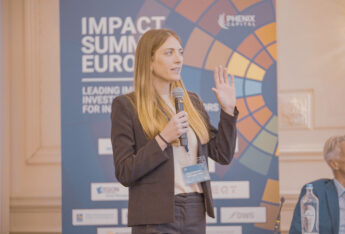A new UN report reveals how impact funds can strengthen gender lens investing to drive inclusive and sustainable development beyond surface-level impact.

A new UN report providing analysis of the market in gender lens investing (GLI) has been published highlighting the challenges and opportunities for incorporating gender and equality issues into investment decisions and the important role of GLI as a transformative force for positive societal change.
The report, ‘Empowering women, building sustainable assets: Strengthening the depth of gender lens investing across asset classes’, was prepared by the United Nations Entity for Gender Equality and the Empowerment of Women (UN Women) in collaboration with the Technology Innovation & Research for Social Impact (Tiresia) research centre at the Politecnico di Milano, Phenix Capital Group (Phenix Capital) and the AXA Research Lab on Gender Equality at Bocconi University.
The paper draws on qualitative and quantitative data collected from Phenix’s Impact Fund Database and market intelligence as well as from interviews with institutional investors including banks, foundations, pension funds, DFIs and fund of funds managers.
It found that the integration of SDG 5 – gender equality – as an impact objective by funds and asset managers varies across asset classes and that overall, evidence of the impact of GLI on gender equality remains, so far, largely anecdotal.
Asked by Impact Investor what more could be done to increase the impact of GLI on gender equality, Leonardo Boni, researcher at Tiresia – Politecnico di Milano said that investors and financial institutions had to reevaluate their due diligence processes.
“Investing in companies that neglect gender considerations signifies support for enterprises lacking in both ethical standards and long-term sustainability. Following this, it becomes crucial to directly grasp how inclusion materialises, tracking with gender-responsive metrics the level of inclusivity and diversity inherent in the investment,” he said. “Finance must reassess its value generation methods by adopting metrics that facilitate comprehension of how robust financial performance contributes to societal advancement.”
Chiara Borneman, director at Phenix Capital, added that the challenge facing the impact investment sector also lay in demonstrating the impact being achieved in a consistent manner, and one that would allow meaningful comparisons to be made between investments.

“For funds, the first focus should be on the change they want to generate and on collecting data to inform decision-making. Encouragingly, we are seeing funds increasingly using theories of change in their investment strategies, tying these to metrics and reporting on them. Standardisation is still a long way off but these are positive signs that show we are moving in the right direction.”
According to the report, renewed efforts are being made to ground gender lens investing in feminist principles, which the authors say is needed to drive meaningful impact and systemic change. It concludes by providing 10 recommendations for advancing the integration of principles and perspectives of feminist economics into investment practices to help investors and asset managers move beyond ‘surface-level interventions’.
Growing demand but progress still slow
According to the report, there is a growing demand for SDG 5-related impact investment funds and despite a slowdown in the number of funds launched targeting SDG-5 in 2022, invested capital in these funds continues to grow year-on-year amounting to $56bn at July 2023.
Nevertheless, at the halfway mark to the UN’s 2030 Sustainable Development Agenda, the report acknowledges the slow progress made towards gender equality, which it says has been hindered by chronic underfunding and a backlash on women’s rights. Funds that include the SDG 5 target represented just 17.2% of all impact funds tracked in the Phenix Capital database at July 2023 and their total AUM is far below other SDGs, such as those related to the energy transition.
Borneman said impact funds targeting SDG 5 had an important role to play in driving progress for gender equality: “Through impact funds, investors have the opportunity to actively invest in solutions that improve the lives of women and girls, from micro-finance funds lending to female entrepreneurs to VC funds investing in female-dominated sectors such as caregiving.”
The report’s authors highlight the importance of prioritising transformative outcomes and call on both investors and impact fund managers to continue exploring innovative approaches and collaborations that could further strengthen the depth of gender lens investing.
Private equity leads GLI investing
The report also includes case studies of GLI-focused impact investment funds across five asset classes, offering insights into the characteristics, opportunities and risks faced by impact investment funds focused on SDG 5.
Of the five asset classes analysed, which include private equity, private debt, real assets, public equity and public debt, private equity represents the highest number of impact funds launched and currently open for investment with an SDG 5 target as well as the biggest asset class in terms of assets under management (AUM), accounting for 33% of AUM.
“There has been lots of growth in recent years in asset classes such as public equity, but I expect private equity to continue to dominate SDG 5-aligned impact investments funds, which have a more hands-on approach with their portfolio companies,” said Borneman who also noted interesting developments in real assets, especially in farmland and cropland and timberland and forestry.
“I think we will see a growing gender focus in these areas alongside biodiversity and climate concerns, with greater attention given to investments that, for example, provide women with income sources through carbon credits, offer gender-focused training in the use of specific types of organic fertiliser, or promote regenerative agriculture,” she concluded.





